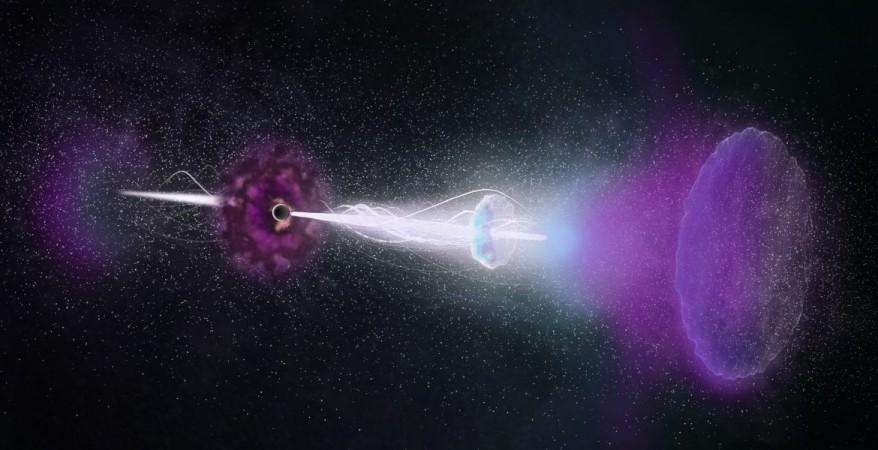
Astronomers working on the Atacama Large Millimeter Array (ALMA), studying the electromagnetic spectrum across the cosmos, stumbled upon a gamma-ray burst (GRB), and the birth of a black hole as the massive star that it once was lost its billion-years long struggle with gravity. The ensuing supernova and the GRB that followed it is among the universe's biggest, most energetic events.
The event recorded by ALMA astronomers happened about 2 billion light years away, notes a report by the Northwestern University. This newborn black hole, as it ate through the remaining matter of what made the star, literally burped out a quick, but incredibly intense flash of gamma rays at Earth, where NASA's Neil Gehrels Swift Observatory detected it for the first time December 2016.
Astronomers realised that the rebound triggered by this GRB's powerful explosion slammed into surrounding debris and it lasted a lot longer than first expected. These observations, say the researchers offer fresh insights into the intricate physics of GRBs.
Gamma rays from the explosion is reported to have disappeared from view just seven seconds after it happened, but longer wavelengths of light from the supernova– which includes X-rays, visible light and radio was on for a few weeks. The event, known as GRB 161219B, was keenly under observation from several observatories around the world including the X-Ray Telescope onboard Neil Gehrels Swift Observatory, the United Kingdom Infra-Red Telescope, the Very Large Array and ALMA, notes the report.
Observations made by them all made it possible for a team of astronomers, including astrophysicists Wen-fai Fong and Raffaella Margutti, to produce ALMA's first-ever time-lapse film of a cosmic explosion which led to the formation of a young black hole.
The "cosmic movie" showed a long-lasting echo like sound at radio wavelengths, known as a reverse shock, notes the report.
"With our current understanding of GRBs, we would normally expect a reverse shock to last only a few seconds," said Tanmoy Laskar, of the National Radio Astronomy Observatory (NRAO), who led the study. "This one lasted a good portion of an entire day."
A reverse shock happens when star particles and dust blasted away because of a GRB because of its powerful outflows slams into its surrounding gases. This slows the escaping material down so much that a shockwave is actually sent back down the outflow.
"Having a reverse shock travelling back into the explosion's outflow is like having a powerful light-bulb illuminating the interiors of the explosion. This is what makes this event unique," said Margutti, one of the researchers involved in the study.
This study was first published in the Astrophysical Journal.
‘Sound of Silence: Haunting Melody from the Death of a Star’ on #SoundCloud #np https://t.co/T50MKz0Au4
— Immanuel Jotham (@JothamManny) July 27, 2018

















